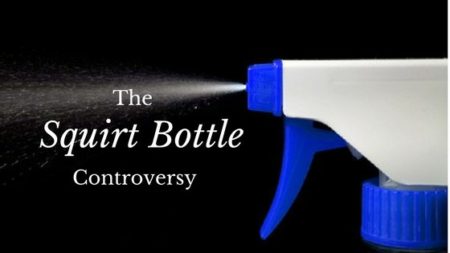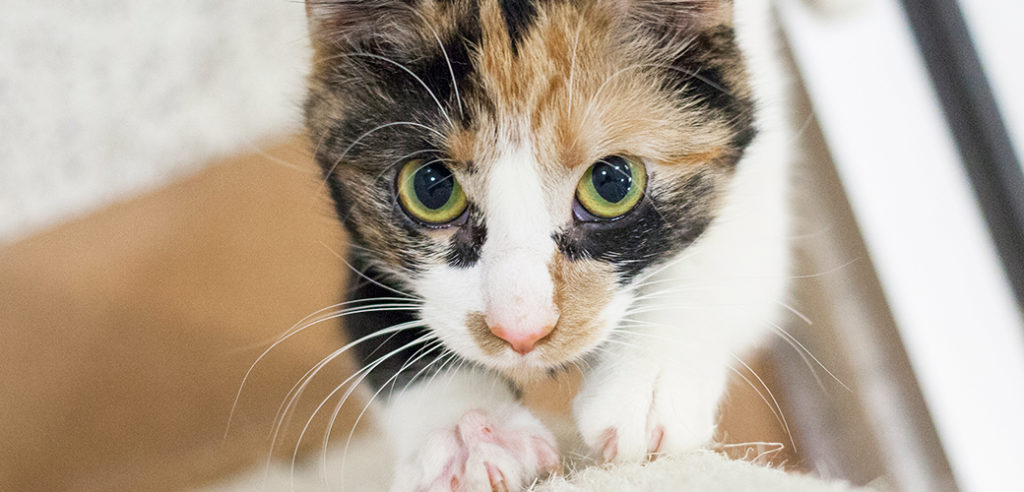
Redirected Aggression in Cats
Redirected aggression is one of the most common forms of aggression among cats living in the same household and can be a challenging problem to resolve. Redirected aggression is when one cat experiences something that instills fear, is over-stimulating or highly arousing and they redirect their frustration, aggression or fear onto whoever is closest. This could be the family dog, another cat or even a human. Redirected aggression is most common in households with five or fewer cats. It rarely occurs in homes that are very saturated in cats.
A common scenario would be an indoor cat looking out a window and seeing a neighbor’s cat in the yard, they want to get that cat, but they can’t so they’re frustrated, heightened and aroused. Then, their feline housemate walks by and the aroused cat turns and lashes out at their buddy that they’ve been living with harmoniously for years. This could even be a littermate or best friend. Then every time they see the “victim cat” the aggressor remembers that state of heightened arousal and attacks again all the while leaving the victim extremely confused and fearful. Sometimes this can be fleeting but in more cases than not the aggressor cat continues to attack the victim during almost every interaction they encounter. Before you know it you have a fearful cat that is hiding and having trouble accessing their basic needs like food, water and litter and the aggressor cat is taking every opportunity to beat up the victim.
In most cases we never know the actual trigger for the redirected aggression. Every once in a while we get lucky and the owners witnessed something but most of the time it seems as though this type of aggression happens completely out of the blue. However, there is almost always a reason for it. If your cats who have previously gotten along well are experiencing sudden outburst related aggression that is confusing to you and has no rhyme or reason they’re more than likely experiencing redirected aggression.
Another common example is two cats sleeping on the sofa and something scary happens on T.V. such as some loud screaming kittens or a painful animal crying out, this could also result in redirected aggression. Another great example is a cat walking through the kitchen and a fruit bowl falls off the top of the refrigerator crashing to the ground, ceramic breaking everywhere, grapefruits and oranges rolling on the floor. The cat bolts in fear under the bed. The human runs to comfort their cat feeling terrible that this just happened and the cat is lunging and hissing at the human. The cat now thinks that the human was associated with the event of the fruit bowl falling and now the cat is fearful and aggressive towards the human. The human would have been better off allowing the cat to retreat and not follow to comfort it; this concreted the cat’s perception that the human was involved with the loud crash. The victim of redirected aggression does not need to be another cat it could be whomever was closest to the scary or arousing experience.
On this note, this is exactly why corrections or punishments such as squirting your cat with a water bottle should either not be done at all or done on the sly, so they do not associate the human with the act as it can instill fear and create a negative association with that individual.
The absolute best thing to do if you are experiencing redirected aggression or aggression for no apparent reason is to completely separate your cats for a couple of days. You can alternate which cat is confined so no one feels punished but just do not allow them to see each other at all. Then use positive reinforcement by having the cats spend just a few minutes together over something motivating like a special treat or favorite toy and then put them back behind solid doors again. It is best to separate the cats immediately because the more experiences they have being aggressive with each other and the victim being attacked the more compounded negativity we have to overcome. If after a few days a positive reinforcement reintroduction is not successful it is best to contact your veterinarian or a certified cat behavior consultant.
These problems can be extremely challenging to rectify and oftentimes we need to enlist the help of some behavior modification medication in efforts to calm everyone down and allow them to learn to associate each other with something good again. I have personally found redirected aggression cases to be some of the most challenging to take on and have had cats need to live separate for as long as a year before they could be loose in the house together again.

Redirected aggression should not be taken lightly and the cats should not be allowed to simply “duke it out” as this will only result in more compounded aggression. When these cases go untreated and the cats are allowed to “work it out” themselves this often results in some house soiling problems because now the victim cat cannot easily get to food, water or litter and starts urinating and defecating in other places in the home. The victim often loses weight because they cannot get to food. Additionally, you may also notice stress over-grooming and symmetrical bald patches on your cat, this occurs because cats groom to comfort themselves when stressed. An environment of plenty is always important to consider in any home with multiple cats.
If your cats are experiencing redirected aggression it is imperative that you have multiple locations for food, water and litter to make it as easy for the cats to get to their basic needs as possible.



